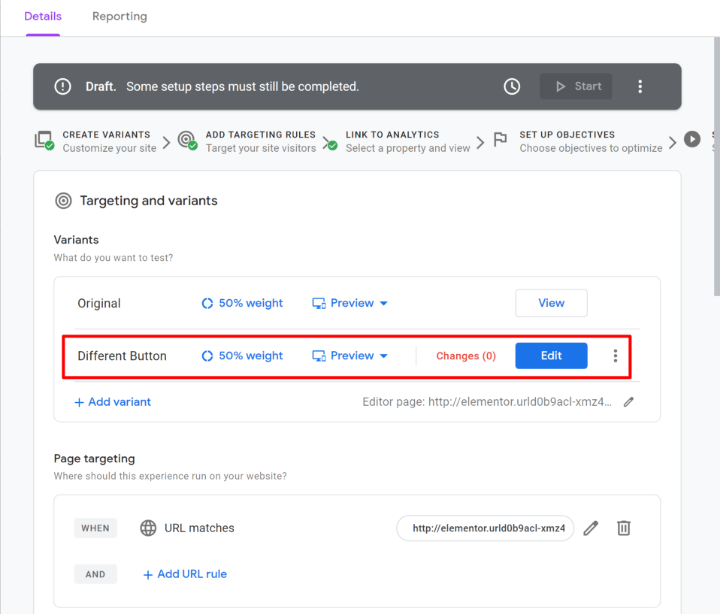Your page is live, you’ve spent a lot of time and energy getting the design just right, search engines show results, but the clicks aren’t coming.
Frustrating as this sounds, it’s a problem many digital marketing firms face at one point or another. The solution? Landing page optimization.
An unoptimized website doesn’t encourage users to keep scrolling, or the page might confuse them. There could be too few call-to-action (CTA) buttons, too much content, page speed might be slow, or it could be something a bit harder to measure.
While addressing these issues may sound complicated, it doesn’t have to be that way. All you have to do is measure how your landing page performs to make the necessary adjustments and boost your business’ conversion rate.
Read on to discover the metrics you should be tracking and how they could make or break your website.
Table Of Contents
- Landing Page Optimization
- What Is a Good Conversion Rate for Landing Pages?
- How To Improve Your Landing Page’s Performance
- Quantitive Metrics
- Qualitative Metrics
- How To Optimize Your Landing Page
- How To Test Your Landing Page Optimization
- Final Thoughts: How To Boost Conversion Rates With Landing Page Optimization
Landing Page Optimization
Landing page optimization (LPO) is the practice of making minor changes to your website to increase conversions and improve user experience.
The ultimate goal of a landing page is to convert your traffic into customers. You may have different plans for different landing pages. One may focus on gathering contact information, while another is geared towards sales.
Define your landing page goals and optimize each page for its given target. Measure performance based on previous periods, traffic, and conversion rate.
To increase your conversion rate, you’ll need to make changes to your landing page copy. You can use some of the tools listed below to discover which areas of your website attract users and which are less popular.
You can also learn more about user behavior, reasoning, and test out ways to attract more clicks.
Remember not to make guesses when changing, but follow the data to make meaningful changes in areas that need it.

What Is a Good Conversion Rate for Landing Pages?
While it’s difficult to give exact numbers on conversion rates, there are a few numbers to keep in mind when setting a target for landing page optimization. Wordstream broke down thousands of Google Analytics pages and found a median conversion rate of 2.35% across all landing pages.
The top 25% achieved 5.31% or higher, probably thanks to some conversion rate optimization (CRO), but they acknowledge some brand bias in these case studies.
The conversion rate varies depending on the traffic source and industry as well. Ecommerce websites often hover lower than 2% while B2B sites can easily double that.
These are just guidelines, and you may find your specific industry or goals don’t align with these margins. Basing your current performance on your previous conversion rate is always an excellent way to check if you’re doing as well as you could be.

How To Improve Your Landing Page’s Performance
If you know what you want your conversion rate to be, you need to work on changing your landing page in measurable ways. We’ll do this using quantitative metrics that easily provide data and qualitative metrics that are more subjective.
To hit the desired action with your landing page optimization, you can focus on the following:
Quantitative Metrics
- CTR – How is your click-through rate? Do guests click on elements, or are they skimming over them? Google Analytics measures your ctr for any ads being run, but you can also use a tool like Hotjar to check.
- Bounce rate – A high bounce rate is an indication that you can improve your landing page. That is the number of visitors who only view one page on your website before leaving. Aim for a bounce rate lower than 50%, 70% and higher is considered pretty poor.
- Form abandonment rate – the average form abandonment rate is 68%. Hotjar can help reduce this to increase sales. A short, easy-to-complete form will help too.
- Traffic source – Google Analytics shows where visitors to your website come from, whether social media, ads, or organic traffic. You can also see if the traffic is mobile, tablet, or desktop-based.
- Leads – how many of your leads convert into sales? Track which leads convert and critical metrics on the sale. Is your value proposition clear, or could it use some polish?
- Traffic – compare your website’s traffic to previous weeks, months, or years using Google Analytics. Take this a step further with a premium tool like Semrush or Ahrefs to see how you compare to your competition.

Qualitative Metrics
- Watch user recordings – tools like Hotjar and Crazy Egg allow you to view actual user experiences. You can see where visitors are drawn to and where they leave your website.
- Usability test – A usability test of your website can show how real visitors interact with your website. Your UI might be beautiful, but your target audience could be having trouble with it. Hotjar offers you a heatmap of where users prefer clicking.
- Interview your sales team – Do they get feedback from customers? Maybe they have some ideas based on their interactions. Your employees are a great source of feedback on your landing page design.
- Interview your customers – This can be a simple survey pop-up like one made with Survey Monkey or more complex questioning conducted by email.
How To Optimize Your Landing Page
With the above research in mind, you can go through each and determine which landing page elements could benefit most from optimization. You’ll probably have a mixture of specific and whole-page fixes to work on to boost your conversion rate.
You want to make sure your landing page is fast and responsive. If your page load time is over a few seconds, your bounce rate will increase substantially. Your website should be mobile-friendly by default.
Moreover, your website should also be attractive. 38% of users leave a website they find unattractive. Using a responsive, visually pleasing landing page makes a big difference.

Now let’s look at a more specific example like improving the CTR on your CTA.
Using a tool like Hotjar’s heatmaps, look up which CTAs draw clicks and which areas of your landing page perform best. Check your current CTR using Google Analytics and then make some changes.
You might move your CTA to a part of the page that has higher traffic or remove elements that clutter your header.
Try introducing new page elements you don’t currently use as well. You can incorporate popups, reduce the number of form fields, add more detailed contact information, including a phone number, or provide some new social media links, testimonials and other forms of social proof.
There are many ways you can work towards optimizing your website for lead generation.
In addition to the technical changes, you may also consider social proof as a form of optimization. Testimonials from satisfied clients or a recommendation from an industry expert can provide reassurance to potential customers on the fence.
How To Test Your Landing Page Optimization
One of the best ways to ensure your changes really work is with an A/B test. A/B testing boils down to testing two or more versions of your website against each other and determining which one performs better.
You can check if a minimal design on your call-to-action with good use of white space and clear messaging resonates better than the button design you currently run. An A/B test will show half of your visitors one version of your webpage and half the other. You can work with sitewide changes or minor elements.
Crazy Egg offers a good platform for A/B testing that lets you make changes slowly and analyze the data. You can see if a font change makes a difference or doesn’t affect your conversion rate. It’s also easy to set up an A/B test on WordPress.

Final Thoughts: How To Boost Conversion Rates With Landing Page Optimization
Landing page optimization is a bit of work. It’s not something that gets completed in one day but takes months of small quantifiable changes to accomplish.
Measure how your landing pages perform in quantitative data that is easy to track over time. For qualitative measures conduct surveys of users to test aesthetic changes or design modifications. Marketers should implement A/B testing to measure how these changes perform.
To improve your homepage, ask for feedback or even view a recorded page view. Your landing page conversion rate won’t increase if real people aren’t clicking on your CTAs.
Having less cluttered CTAs that lead to your conversion goals is vital. Elementor boasts a gallery of pre-optimized landing page templates for every need. Try them out today.
Looking for fresh content?
By entering your email, you agree to receive Elementor emails, including marketing emails,
and agree to our Terms & Conditions and Privacy Policy.


